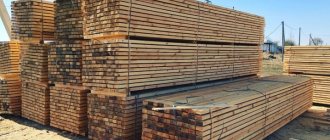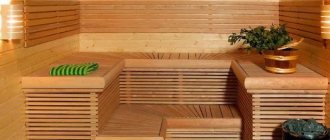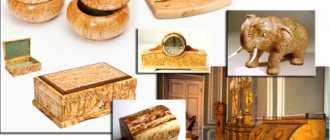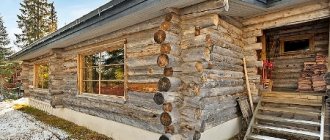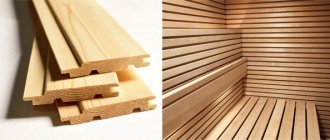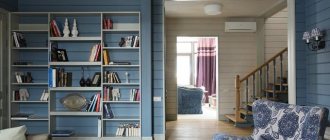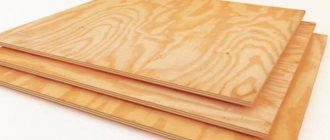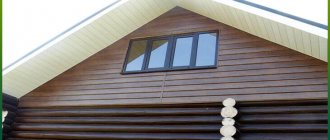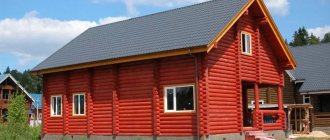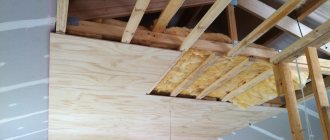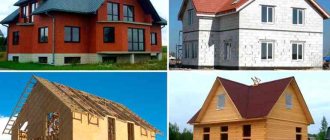Barn board: features of production and finishing
Barn board is a material obtained from the dismantling of ancient wooden buildings that have stood from 30 to 300 years.
These can be houses and barns, bridges and outbuildings, piers and sheds. But not every board can be considered a barn board and used a second time, because the wood must be durable, hardened and attractive in appearance. Finishing with barn boards allows you to give the interior or exterior a noble luxury, a touch of antiquity, making it unique and stylish. Real barn board has an established structure. Numerous natural cycles, when the tree absorbed moisture and gave it away, was frozen and blown by the winds, made such boards a very stable material. Today they are used for exterior and interior decoration, including the design of swimming pools.
Features of finishing with barn boards
Most often, barn boards are made from pine, oak or larch, that is, from the wood of those trees that grow in abundance in Russia. Considering that the age of barn boards sometimes reaches 100, 200 or even 300 years, old wood is treated in a special way:
- rotten, insect-eaten and cracked boards are discarded;
- then the boards are sorted by type of wood;
- All metal objects and loose wood are removed from the boards;
- then comes the time for disinfestation: special compounds will destroy insects hidden in the wood;
- the last stage of processing barn boards consists of polishing, but in a jewelry manner: knots, small cracks, traces of nails and paint should remain on the surface, this is considered a kind of certificate of authenticity of the barn board;
- since old Russian wood has a gray, silver, or less often brown color, it is sometimes subjected to a brushing procedure, that is, highlighting the structure, in order to give the barn boards greater expressiveness;
- ancient boards are much thicker than modern ones, so after finishing the processing, the barn board is sawn into 2-3 thin ones;
- if the barn board is going to be used for cladding a large surface, the cut lumber is assembled into modular panels.
The installation of barn boards also has its own characteristics:
- Finishing with barn boards in its authentic design has always been done vertically, so for naturalness, when installing on a large surface, this method of cladding will be correct. The decor of individual areas can be horizontal.
- Installation is carried out on a frame or plywood. Old wood may have cracks and nail holes, so underlay or paint the plywood to match the boards.
- If finishing with barn boards is done using nails, you need to work doubly carefully so as not to damage the surface of the old board.
- If surfaces that are often touched by people are being finished, it is better to treat the surface of old boards with oil or varnish.
Aging methods
Ceiling false beam.
Let's talk about the most common ways to make a board look old within a few hours or days, but not centuries or millennia.
Here is a set of proven methods that we are ready to share with you:
- Brushing (from the English brush - “brush”) is the processing of material with natural, metal or plastic brushes using grinders and electric drills, as well as manually.
- Burning. Using a gas burner, the surface is subjected to heat treatment, resulting in varying darkening of the fibers and the appearance of a slight relief.
- Etching with alkalis. If you apply a strong solution of potassium hydroxide or caustic soda to the surface, then over a certain period of time it will also take on signs of antiquity. Then the reagent is washed off.
- Tinting with wood stains, impregnations, wax and paints. These materials help create the necessary special pigmentation that imitates a noble patina or traces of mold.
The process of brushing with a grinder.
Important! As a rule, the listed methods are used comprehensively, but each master chooses his own way to achieve one or another result.
Where does barn board trim look best?
Barnwood trim is a very popular trend for interiors of different styles.
Barn board finishing is used for:
- flooring both in city apartments and country residences;
- furniture in loft and Scandinavian styles;
- original entrance and interior doors.
- decor of ceilings and walls, fireplaces, headboards;
- facing the house and creating a fence.
invites you to buy barn boards of excellent quality. We carefully check the material before offering it to customers, so our boards are distinguished by their beautiful appearance and excellent performance characteristics. Our company is also ready to make custom doors, furniture or panels from barn boards. Large discounts are available for wholesale buyers.
Barn board - what is it?
The idea of reusing building materials has been around for quite some time. A few decades ago, furniture, picture frames, and interior items began to be made from old wood, which had already been used in construction and decoration.
Wall decoration with old boards
Important! Barn board is a material that was obtained after the demolition of old buildings (houses, barns, sheds). Such raw materials are very different in color from new ones, and also have noticeable traces of use - chips, chips, scratches, nicks, holes from fasteners, bark beetle burrows.
Externally, the barn board is literally imbued with the spirit of antiquity. It has its own history and evokes nostalgic feelings and peace for many.
Old wood has amazing beauty and can be considered a true antique with a unique appearance. No stains or paints can age new material as effectively as time has done.
The use of barn boards has not only aesthetic, but also practical advantages:
- non-shrinkability;
- absence of harmful substances in the composition, environmental friendliness;
- ease of processing.
Some users are concerned: will a coating that has already served for many years be reliable? It turns out that high-quality wood can be used for centuries, since over the past years it has completely dried out naturally.
Thanks to the slow evaporation of moisture, the lamellas did not deform and remained stable. Therefore, they can easily withstand fluctuations in temperature and humidity, and do not fall apart when nailing or sawing.
Not every product is suitable for reuse. Some boards will have to be immediately rejected and thrown away. We are talking about cracked, twisted, rotten specimens.
Important! For further work, only the strongest, undamaged lamellas are selected, after which they are thoroughly processed.
First, the material is disinfected, then old paint, staples and nails are removed. Next, it is cut and sanded, but so that abrasions, knots and other authentic features remain. The length and thickness of each board depends on the needs of the user and the specific design idea.
Old barn board is a durable and original material for exterior and interior decoration
Today, in the age of plastic, glass and metal, we so lack materials with history, rich texture and complex color. For those who want to fill the interior with a breath of antiquity, the modern market offers barn boards
The idea of reusing wood is not new at all. Already 15 years ago on the market you could find cabinets, doors, frames and other interior items made from time-worn boards. Such unusual raw materials were collected during the demolition of old wooden houses, piers, barns, etc. This is why the material got its name.
The reader may have a completely logical question: why, in principle, buy recyclable materials if you can age a “young” board? The reason is the amazing beauty of wood with history. Over many decades (and even centuries) of use, time leaves many imprints on it, turning it into a real antique. Darkening, cracks, woodworm passages, paint residues, warehouse stamps - all this gives the barn board a unique charm. No stains, paints or brushing technologies can achieve this effect. No matter how you process a freshly planed board, it will still remain a new piece.
Another reasonable concern: How durable is a board that has lasted 30, 50, or 300 years? Will it fall apart when cutting and hammering nails? As hard as it may be to believe, wood can remain strong for many centuries. Proof of this is the piles on which medieval castles stand to this day. In those distant times there was no need to rush. Houses were built slowly, allowing the wood to dry naturally. Since the moisture was released gradually, the material did not deform (which happens today when drying in ovens). And after a few years, builders were provided with a stable and durable material that no longer “performed” with fluctuations in temperature and humidity.
Barn board has stood the test of time and is much stronger and more stable than modern lumber.
Of course, not every plank from a dismantled barn is a precious fossil. Most of the old wood - warped, cracked and rotten - is rejected at the harvesting stage. And what is suitable for use undergoes long and labor-intensive processing.
First of all, the boards are thoroughly disinfected. Old paint, if any, is removed from them, nails, staples and other fasteners are pulled out. The material is then sent for sawing. Since previously they did not save on lumber, sometimes it is possible to make three from one old board (much wider and longer than is customary today). Finally, to further reveal the texture of the material, some companies use brushing technology.
The barn board is sanded to give it a smooth finish. But individual features - darkening from paint, scratches, cuts - are preserved
Of course, there are no standards for barn boards: each product is unique and inimitable. The length, thickness and width of the lamella are determined based on the tasks assigned. So, where can you use time-tested wood?
First of all, in interior decoration. Note that the floor will require lumber with a thickness of at least 50 mm. For walls and ceilings, the requirements are not so stringent. By the way, false ceiling beams made from old wood are very popular. And if you wish, you can order a mosaic from this amazing material.
Of course, barn wood is great for making furniture. And not only cabinets, cabinets and other complex products. A simple shelving unit with “antique” shelves will become a real decoration for your office or living room. The same goes for mantels, mirror frames and other decorative items.
Theoretically, external walls can also be covered with barn boards, but such a finish will be truly “golden”. The first, main and, perhaps, only drawback of this amazing material is its high price. One square meter costs an average of 2000-5000 rubles. And the cost of products made from centuries-old wood amounts to tens, and sometimes hundreds of thousands. However, it is not necessary to cover the entire house with antique wood from roof to base. Sometimes a few boards are enough to turn a faceless modern interior made of plasterboard, glass and plastic into a cozy home with history.
Types of material
Barn board is classified based on the type of raw material from which it is made. The most expensive and high-quality material is oak. Rough but noble-looking products look great in retro interiors, but are no less suitable for modern styles.
Old oak table top
In Russia and the CIS countries, barn boards made of larch, coniferous trees, and aspen are also often used. In Asian countries they use slats made of teak and Chinese elm, in America - from oak and whitebark pine.
Interesting! Australian eucalyptus material is considered the most prestigious, and the raw materials for it are obtained after dismantling piles, piers, and bridges.
The age of the boards can also vary. Typically, products that have served for 15 to 30 years are used. The older the raw material, the more valuable it is and the more expensive it is.
The material also varies in color, which also depends on the type of wood. Most often there are various shades of brown, grayish, less often greenish and red. There are also very light-colored, sun-bleached boards.
Where can the material be used?
As a rule, naturally aged wood is used in interior decoration. It is also suitable for cladding facades, but the cost of finishing will be very high.
Important! It should be taken into account that a square meter of aged wood costs 2000-5000 rubles or more. Therefore, it is worth immediately calculating the cost of home renovation.
The oldest antique boards, which are over a hundred years old, are used to make exquisite things: panels, picture frames, icons, furniture.
Barn board panel
What styles is the coating suitable for?
The material is successfully implemented in a variety of interiors - from classic to modern. The main directions of its application depending on the style:
- Loft. Barn board in industrial design looks appropriate and very fashionable. It seems to embody the “working” atmosphere of past years, while being successfully combined with stone, brick, and concrete. Typically, in the loft style, the board is used to make furniture or decorate an accent wall.
- Country and Scandinavian style. The main idea of these interior trends is unity with nature, therefore all natural materials are suitable for interior design. Wood is used to cover the walls or make an accent area, lay it on the floor, make beams, doors, picture frames.
- Classic. Furniture made from old boards will fit perfectly into almost any classic interior. Antique panels, frames for mirrors, paintings, and other accessories made of aged wood will look no less beautiful.
- Minimalism. With the help of boards, rooms are zoned, floors and ceilings are decorated. For minimalism, predominantly the lightest materials are selected.
Decorative slats - buffels
What are buffels?
Baffels are decorative slats made of solid wood or MDF slats covered with veneer. Trendy decor is actively used by designers in the decoration of apartments, country houses and commercial premises decorated in the loft style.
Benefits of buffels
- Lamels have different sizes and shapes.
- Quickly installed and dismantled.
- There is no debris after installation.
The slats are made from wood planks cut from solid wood of various types. Pine is considered the most budget option. Oak is more expensive, but it is of higher quality. The planks are fixed using hidden fastenings or liquid nails.
What functions do buffels perform?
Decorative . Handmade wooden panels perfectly refresh and complement the interior and can dilute the cold industrial style.
Practical. Wooden panels partially suppress the echo effect, which is why they are often found in cinema halls. And with the help of slats, designers can visually change the volume of the room.
Zoning. Slats attached to a small area on the wall or ceiling visually delimit the space.
Where and how are the buffels attached?
Slat partitions will become a stylish decoration for any room. Wooden decor can become a headboard for a bed, highlight a dining area in a kitchen, or partially or completely cover a wall in a living room or hallway.
Ceiling. The loft style offers not only ceiling decoration using boards and beams, but finishing with slats, which are attached to a 10 mm substrate alternately, with a given pitch. Keep in mind that buffels are great at hiding flaws on the ceiling.
Walls. Conventional vertical slats are glued to liquid nails. If the buffels have a groove, then a hidden fastening is used: a mounting strip is placed on a self-tapping dowel, which is then treated with glue. Next, a hollow rail is placed on it.
Floor and ceiling. If a vertical slatted partition is mounted, the fastening is carried out using a self-tapping dowel.
Why shouldn't you buy slats yourself?
If you buy cheap slats on the market, you will definitely be deceived. They will sell unpolished slats that dry naturally, which means that when the humidity in the house changes, they will change shape and lose their attractiveness.
Recommendations for arranging premises
Barn board is a high-quality and beautiful building material, but it requires proper use in the interior. Experienced designers do not advise using too many wooden coverings in one room - it will look excessive and tasteless.
Advice! It is better to introduce wood into the design little by little, for example, on only one wall, in the form of ceiling beams or floors. Additionally, a barnwood accent wall pairs well with accessories or furniture made from the same material.
When laying boards, you can interestingly alternate raw materials of different shades, for example, light and dark lamellas. A combination of wood and brickwork, leather, and forged elements will look no less successful. For decorating windows in rooms where the walls are decorated with wood, linen, cotton and other natural fabrics are ideal.
Examples in the interior
Barn board looks good in bedroom design. It is used to cover the wall behind the bed, while changing the direction of the lamellas, selecting decorative elements, alternating shades.
An accent wall will attract attention in the living room, especially in combination with brick or plaster in a beige or cream shade. Also, in the room for receiving guests, you can arrange a wooden floor, and cover the walls with light wallpaper, complementing the interior with fluffy textiles: sofa covers, a carpet.
Barn board wall panels are all the rage right now. Often the walls are finished with seamless panels mounted on thick plywood. They are left in their original form, varnished, waxed or painted, and various designs are applied.
Original signs, 3D panels, clocks, and signs are made from barn boards. In eco-style, such products go well with green plants, eco-walls or moss compositions.
Using barn boards in the interior is a great way to make the atmosphere warm, homely and cozy, diversify the design and add a “zest” to it.
All about barn board
- What it is?
- Kinds
- Usage
- Useful tips
- Examples in the interior
The range of materials for interior decoration is quite wide: it includes stone, marble, different types of panels, and much more. Despite this assortment, wood is becoming increasingly popular. One of its options would be barn board. We will talk about its advantages and features in this article.
What it is?
Barn boards are materials that were obtained as a result of the demolition of old buildings: barns, houses, barns, mills. Such boards really breathe antiquity: you can see every chip, scratch, mark from an ax or nail on them. The use of such material has a huge advantage: it already has its own history, so it evokes in many people nostalgic feelings and pleasant thoughts about where this tree used to be, what smells it absorbed, what people touched it.
Of course, not every tree left over from previous owners can be reused. When dismantling structures, only strong, undamaged elements are selected, which then undergo careful processing. They are disinfected from insects, nails and knots are removed, and sanded. However, all traces of axes, saws, nails are sure to be left; scratches and abrasions also remain in place, which allows you to preserve the authenticity of the material.
Barn boards are widely used not only in Russia, but also in many European countries, as well as in the USA and Canada. This is due to the following reasons:
- the material has been formed for a long time, it will not shrink and will not depend on the influence of temperatures;
- this is a “warm” material that lifts your spirits, gives you a feeling of homely warmth and comfort;
- there are no substances harmful to humans in the boards;
- There are different types of wood, as well as different textures and colors;
- the material can be used in many design directions.
There is only one downside to this kind of material - rather high prices. However, you cannot expect high-quality antiques to be cheap.
Barn boards can have either a smooth or rough texture. It is worth noting that there is no standard for what they must be. Each model is unique and inimitable. Products are classified primarily by type of wood, and it mainly depends on the country.
- In Russia, oak is the most popular. These are rough boards that will look great in modern interiors. In addition to oak, native Russian forest trees are used: aspen, larch, and several coniferous types.
- American barn boards are made from oak or whitebark pine. Such materials are most often obtained from non-residential buildings.
- The most expensive are barn boards from Australia. They are taken from structures located close to or directly in the water: piles, piers, bridges. Such boards are made from a special subspecies of eucalyptus.
- In Asian countries, boards are also most often taken from coastal structures. Chinese elm was used for them, as well as teak.
Old boards can vary in age. The youngest buildings are about 30 years old, but there are also much older ones, dating back to past centuries. The older the board, the more expensive and valuable it is.
There are also imitations of barn boards: new, artificially aged or really old models that completely replicate the texture of the authentic material. Such products are very popular in modern styles.
In addition, barn boards can be different in color. It depends on the type of tree. Boards from America, as a rule, have gray or greenish colors, less often red. In Russia, silver and brown colors are popular. There are very light, faded products.
Reuse old wood
Reuse old wood
By reusing hardwood , you can save a lot of money. Look around you and you can't help but notice recyclable wood. However, be prepared to sacrifice your ego and roll up your sleeves.
To gain the right to reuse this valuable material, you'll soon have to ask favors from strangers, rummage through places that are hardly clean, and do a lot of work.
What is trash for one is treasure for another
Slow down near construction sites
Do not drive past buildings being reconstructed or demolished. If you don't intervene, the materials will likely end up in a construction waste landfill. Find the work manager or building owner and politely ask permission to take some of the material. The older the structure being renovated or demolished, the higher the chances of encountering excellent seasoned wood with a fine grain grain.
Valuable finds: hardwood floors, wide plinths, massive doors of residential buildings, wooden beams of administrative buildings.
Avoid: houses built in the last 60-70 years; the standardized building materials demanded by the growth of residential construction are of little use for carpentry projects.
New life for an old barn
The bonanza of old barns
Wooden sheds are another promising source of recycled wood.
Treasure Finds: Classic long-beam timber frame structures contain a significant amount of straight-grained timber.
Avoid: wood that shows signs of wood-boring beetles or termites; these insects can easily spread throughout your lumber yard and throughout your home.
Bargain with merchants
A few minutes spent leafing through the Yellow Pages will provide you with the location of many hardwood companies. From furniture shops and veneer manufacturers to door and boat makers, any shop that cuts boards produces waste.
Valuable finds: mahogany; This popular material is still often used today in the production of doors, boats and expensive furniture.
Avoid: companies that use resources efficiently; tiny scraps will only fill your trash bin.
The cost of delivery will be covered by the amount of material
Don't ignore old furniture
Discarded furniture can be considered one of the most undervalued sources of material for carpentry projects. Even though old furniture doesn't look much like planks, that doesn't mean it doesn't have usable wood. Pay close attention to garage sales where real gems are found. When the trade is winding down, instead of trying on shoes and shirts, ask if you can borrow the shelves. Even without finding a suitable material, you can purchase cabinets, racks or shelves with compartments for your workshop. Finally, if your town is in the midst of a spring cleanup, go hunting early (perhaps even the evening before)—the game may be big.
Treasures: Wooden countertops, headboards, broken pianos and church pews are treasures for a woodworker.
Avoid: Veneered furniture masquerading as solid wood furniture.
You can make a lot out of pallets
Ubiquitous pallets
You can find pallets for transporting goods from almost any company that has a loading dock. However, before you reap the benefits, you'll have to pull out a lot of nails and clean the dirt off your pallets. Therefore, be selective; Don't waste time and effort on regular pine board pallets. Instead, look for hardwood (after getting management approval, of course). The heaviest or most expensive goods are usually shipped on pallets made of thick oak planks.
Usage
There are many possibilities for using old barn boards in the interior. Most often they are used for wall decoration, replacing wallpaper with them. A very popular option is an accent wall. Barn boards are used in different rooms: living room, bedroom, kitchen, children's room.
In addition to walls, boards are also used as flooring. These floors look amazing both in an apartment and in a country house. It must be remembered that the thickness of the board must be at least 50 mm. You can also use laminate with imitation of natural material.
Another area of application for barn boards is the manufacture of doors and partitions. The latter zone the room very effectively, so they will be very useful in the interior of a studio apartment. In addition, boards can be used as decorative elements. They can beautifully highlight the head of the bed, fireplace, or individual areas of the veranda. And, of course, barn boards make amazing furniture. Countertops made of this material would be appropriate in the kitchen, a small table can be placed in the living room, and bedside tables in the bedroom.
What explains the popularity of aged wood?
Aged boards are actively used in interior design and furniture production, because now this material is more relevant than ever. But unlike other methods of decoration, natural wood will not go out of fashion even after years. Interiors decorated with natural materials seem to be out of time, they are not subject to fashion trends. This is an ideal solution for those who want a high-quality renovation that will last for centuries, which will not look boring and one-sided, but, on the contrary, will begin to acquire its own “history” over the years.
Aged boards have become popular due to the fact that they can effectively fit into a number of styles. Wood, like other natural materials, always looks good in the interiors of houses and apartments.
Board on the wall in the house - the main types of materials and features of working with them
A wall made of boards is a very interesting solution that is popular these days, as it allows you to create a unique atmosphere in the room and give the atmosphere an original flavor. It should be noted that elements for a wide variety of purposes can be used as finishing materials; you just need to give free rein to your imagination and new uses for wooden products.
In the photo: a board on the office wall - an excellent solution for creating a comfortable working environment
Do-it-yourself from a board: features of making various products
The board is probably the most popular construction and finishing material, at least in the Russian Federation, which is rich in forest lands with different types of wood. Therefore, there will always be people who want to make something out of it themselves.
These could be, for example, outbuildings, a bathhouse or greenhouses made from boards with your own hands. The use of such material is extremely widespread, and we will try to cover this topic in more detail, and you will also find a video in this article.
Advantages of this option
First of all, it is necessary to note the most significant positive aspects that the use of wood trim gives:
| Originality | You don’t have to decorate the entire room - use a natural moisture board for one of the walls, and it will become the central accent of the entire interior. The natural texture of wood blends equally organically into both classic and modern settings, while with the help of different compositions the surface can be given a variety of shades or even made multi-colored |
| Environmental friendliness | Wood has the ability to absorb and release moisture, which allows it to maintain an optimal indoor microclimate. In addition, many breeds emit substances that are beneficial to human health, which have a positive effect on the well-being of all people in the room. Natural materials have always been valued and will continue to be valued very highly. |
| Reasonable cost | With a solid appearance of the finish, its price is quite affordable, and you can use improvised materials that will look no worse than new ones. A simple, nondescript board can be artificially aged and with the help of impregnation it can be given a magnificent look, that is, from leftover materials you can create an excellent decor with your own hands for free |
| Durability | Since an optimal microclimate is always maintained indoors, wood is practically not affected by adverse factors in the form of changes in humidity and temperature, which allows it to serve for decades without deteriorating its performance properties and characteristics. |
Important! Another advantage is the huge number of wood textures; if you wish, you can find very unusual options, even using a rough fence board.
A wall board can be deliberately rough, this gives it a special charm
Board with imitation antiquity
Purpose and scope
Aged timber for finishing the ceiling.
Let's start with definitions. Aged wood is specially treated wood that has been given the effect of antiquity, wear, noble antiquity with a hint of a solid and interesting history.
Such products involuntarily evoke respect, interest, excite the human imagination, and he himself invents their incredible fate. Accordingly, interiors decorated using aged wood a priori look solid and attractive, establishments become interesting and slightly mysterious, and housing acquires a special coziness.
Solid board made of aged oak as part of the parquet flooring.
Antique furniture is especially valued. However, due to the shortage, the price for individual pieces is too high, but the craftsmen are ready to create no less sophisticated objects for lovers of beauty, but at a very reasonable cost using a set of processing methods that we want to tell you about.
Aged boards are used in the interior, furniture production, flooring, house construction, finishing facades and roofs, making fences, producing weapons, souvenirs, decorations and other products. Antiques have always had an inexplicable effect on people, and this feature has not bypassed wood.
In the design of the facade.
Important! The main task of aging is to give the surface of a wooden product a special, decorative and attractive effect.
Physics of the process
Boards in a creatively made fence.
To figure out how to age a material with your own hands, you need to understand how this happens in nature. In other words, understand the physics of the process.
The wood has a heterogeneous structure and consists of fibers formed by annual rings. Different rings have different strength, density and other parameters, and therefore react differently to the natural wear that occurs in the natural environment.
Under the influence of wind, solar radiation, rain, snow, and temperature changes, some fibers break down faster, others slower. This is how a characteristic relief appears.
Furniture made from aged boards.
Also, due to the mass of differences in properties, individual areas are painted differently, and the patina that appears over time has different shades and properties. Thus, over the course of decades and centuries, under the influence of a unique set of factors, that unique pattern is formed for which we value antiques so much.
Unfortunately, we are not able to make nature work faster, but we are quite capable of imitating its actions. To do this, we must find and recreate those factors that have a decisive influence on the formation of the most characteristic features of antiquity, and they have been found.
The photo shows treated larch.
They turned out to be:
- Mechanical - exposure to winds, rain, sand, various other frictions and contacts with other objects and substances.
- Chemical - reactions to compounds of salts, acids and alkalis dissolved in water, chemicals released by fungi and plants, toxins of animals and microbes - all this can cause a change in color and the appearance of pigmentation, a change in the brightness and shade of the existing color, etc.
- Thermal. Often wood ends up in a fire zone with high temperatures or burns out in the scorching sun. This is also an important factor in the appearance of specific coloring and relief.
- Biological - arising as a result of the vital activity of fungi, insects, rodents, larvae, birds, etc.
Stylish chair from the past.
Important! Having learned the main natural routes of influence, we have come close to the discovery of artificial methods of aging wood.
Types of materials and recommendations for their use
We will look at what types of wood products are most often used for work and how they can be attached to the surface of the walls. It is important to do everything correctly so that the result is not only attractive, but also durable.
Product types
In fact, everything is limited only by your imagination; we will tell you about the most interesting options:
- Using boards from pallets or old boxes is a solution that costs you almost nothing, since these products can be found, and often after construction they accumulate and are simply burned or thrown away. You need to disassemble them, after which you can lightly clean the surface and use it in its original form, which reflects the patina of time and gives the surface a special charm;
Few people recognize the elements on the wall as parts of old pallets.
- The second option is to use an ordinary board left over after construction; you can purchase several elements and cut them into elements of the desired size; they cost little, so you will not incur any special expenses. To give the surface a special texture, you can treat it with a special plastic brush attached to a drill; it will remove soft fibers and artificially age the surface;
- The parquet board on the wall also looks very attractive. The advantage of this option is the fact that the elements are already varnished and no additional processing is required, and the fastening system allows you to create a perfectly flat surface that is easy to care for and wash;
A stacked board on the wall is a popular solution among designers
- Profiled boards for walls can be used, this is the name of the lining, which is specially designed for this work. But this option is more suitable for country houses and baths; in an apartment such a solution may not look entirely appropriate;
- Also sometimes used cladding boards for external walls, most often it is a block house or imitation timber, these options allow you to create the illusion of a log surface, which is very important for interiors in Provence or country style;
- Sometimes designers go so far that the floor smoothly transitions to the wall; this solution can be very interesting, provided that the room is designed in a certain concept and every element of the furnishings is in its place. It is not recommended to implement such options yourself.
This design option is suitable for wood lovers
Installation recommendations
Now let's look at how to attach boards to the wall; there are several options for carrying out the work, and you need to choose the one that is best suited for certain conditions. It all depends on what kind of cladding board is used for the interior walls and what the base is made of.
Work can be carried out in the following ways:
- The easiest option is to use liquid nails. These are high-strength compounds that have excellent adhesion to a wide variety of substrates, which greatly simplifies the work and speeds up the process. The most important thing is to clean the surface from dirt, degrease it and you can glue wooden elements; it is important to study all the recommendations given in the instructions for use, since the features of the working process may differ for different compositions;
How to attach barn board to the wall?
Check the evenness of the wall using a level. The deviation cannot exceed 2 mm per 2 meters of length.
STEPS 7
Before starting installation, we acclimatize the boards in their original packaging for about 48 hours. The Barlinek board is made of natural wood, which is why its texture is unique. In this regard, before laying it is recommended to select the color of the laid coating.
STEPS 8
Apply wood glue or assembly adhesive to wooden structural joists (up to the height of one board). We apply the first board (with the cut off tenon) to the floor, press it to the joists with glue and fasten it on top using fastening clips.
STEPS 9
We install a fastening clip on the protruding tenon of the board, which we then screw to each joist using wood screws.
STEPS 10
We connect subsequent boards to each other using fastening clips - finishing them together
STEPS 11
We finish external corners, for example, by cutting the edges of the boards at an angle of 45 degrees. Apply assembly adhesive to the joints of the edges.
STEPS 12
Apply assembly glue to the corners cut in this way, at the junction of the boards.
STEPS 13
Then, in this place we glue, for example, an aluminum strip, which is a decorative element and protects the sharp edges of the beveled boards. Aluminum or wooden corners can also be used as a substitute.
STEPS 14
The final result. There is the possibility of using many finishing elements, such as shelves or hangers.
INSTALLATION OF PARQUET BOARDS ON THE WALL - ADDITIONAL INFORMATION
For laying wooden multi-layer parquet boards, Barlinek recommends 5Gc end-lock boards. This lock does not require tapping along the short edge, making laying the boards on the wall much easier. The joint in the inner corner can be finished using acrylic filler in the color of the boards. The floor-to-wall connection or the joint between the wall cladding and the ceiling can be masked with a plinth. A quarter can be made from the plinth to mask the joints by cutting the top of the plinth to a thickness of 14 mm. When mounting a TV or cabinet to wall cladding, the mounting anchors must be secured to the brick wall. Lightweight objects can be attached directly to wood cladding using anchors provided for this purpose.
The conditions for using multi-layer wooden boards laid in places other than the floor are the same as for parquet boards on the floor, i.e. relative air humidity from 45% to 60%, temperature from +18°C to +24°C. To care for wooden wall cladding made from Barlinek parquet boards, you should use care products from the Barlinek company offer, intended for boards of various finishes. The metal mounting clip allows for quick, safe and easy installation of any 14 or 15 mm thick Barlinek multi-layer parquet board on the wall.
